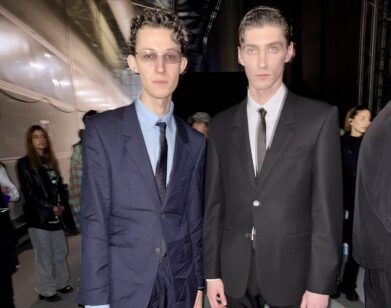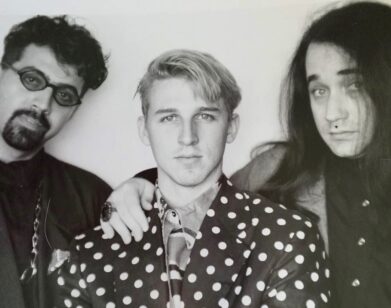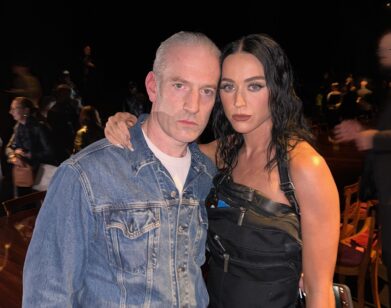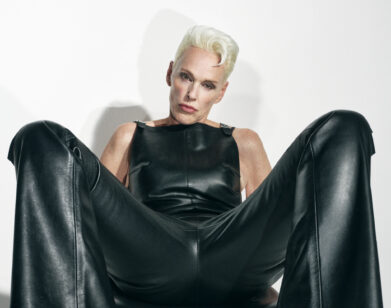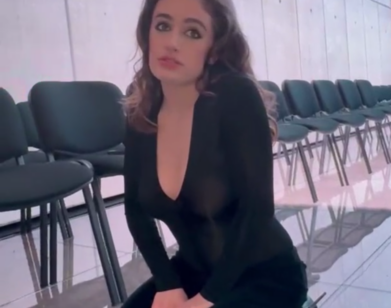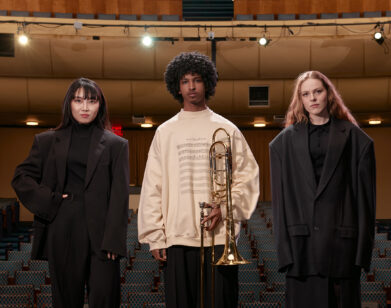COUTURIER
Demna Gvasalia Interviewed by André Leon Talley and Starring Iman

Courtesy of Demna Gvasalia.
We are so hyper-energized by Demna Gvasalia’s first Balenciaga haute-couture collection, the first from the fabled Paris fashion house in 50 years. We loved the silent show, the normcore, the bijoux, and that bride. Demna gave us the right opulence to dream about now. So we got couture expert André Leon Talley to talk to him about the moment, and the brilliant Iman to model some of our favorite pieces from the collection.
———
ANDRÉ LEON TALLEY: Demna, how are you?
DEMNA GVASALIA: I’m fine. How are you?
LEON TALLEY: I’m very fine. And I want to say, first of all, it is an honor to speak to you.
GVASALIA: When I heard that the interview was with you, I was like, “Oh my god, that’s my dream come true,” because I’ve never met you, but you’re one of the first people I’ve ever associated with fashion.
LEON TALLEY: Thank you. When they asked me, I thought, “Yes.” I know who you are, and I know what you did with Vetements, but with this first couture collection for Balenciaga, you have redefined the concept of couture in the 21st century. You’ve taken it to the 22nd century. It reminded me of a show I helped John Galliano do in March of 1994, and it totally turned fashion around. What I love is how you do casting. It’s brilliant. You’re casting real people, are you not?
GVASALIA: Yeah. I cast real people. They have such personalities and some of them are quite the characters. They choose what they want to wear. And it’s also very Balenciaga. He used to have what people would call “ugly models.”
LEON TALLEY: Yes, but they were elegant.
GVASALIA: They were super elegant, and he made them elegant with his clothes. People transformed when they put those dresses on. It makes sense to look for unconventional beauty at Balenciaga.
LEON TALLEY: Those male models that opened your show are so probable in their own natural beauty, and then you transform them with these severe cuts, oversized volume cuts, precision cuts. And I love that the girl who’s wearing the boot heel, the pointed-toe shoe, the man has them, too. It’s the fluidness that responds to the world today. It’s a broken elegance.
GVASALIA: I was so jealous working on the collection at the beginning, because I felt like I wanted to wear it, too. I want to be able to experience wearing a couture jacket. I was like, I need to do couture for men, or—it doesn’t matter what gender. It doesn’t make sense in 2021 to create a gender for couture. But I thought if I’m giving a man couture in Balenciaga, I want to make him suffer a little bit.
LEON TALLEY: And one should suffer a little bit for style and fashion.
GVASALIA: One of the big puffer coats I had in the lineup was inspired by one of the looks that you wore, the red puffer coat. It was one of the images on my mood board. Literally, you were on my inspiration board in this coat because I thought it was so Balenciaga. It was iconic.
LEON TALLEY: Oh, thank you. That was a Norma Kamali puffer coat. She would be thrilled. That’s my favorite coat. I wear it every day when it’s cold, to church, everywhere.
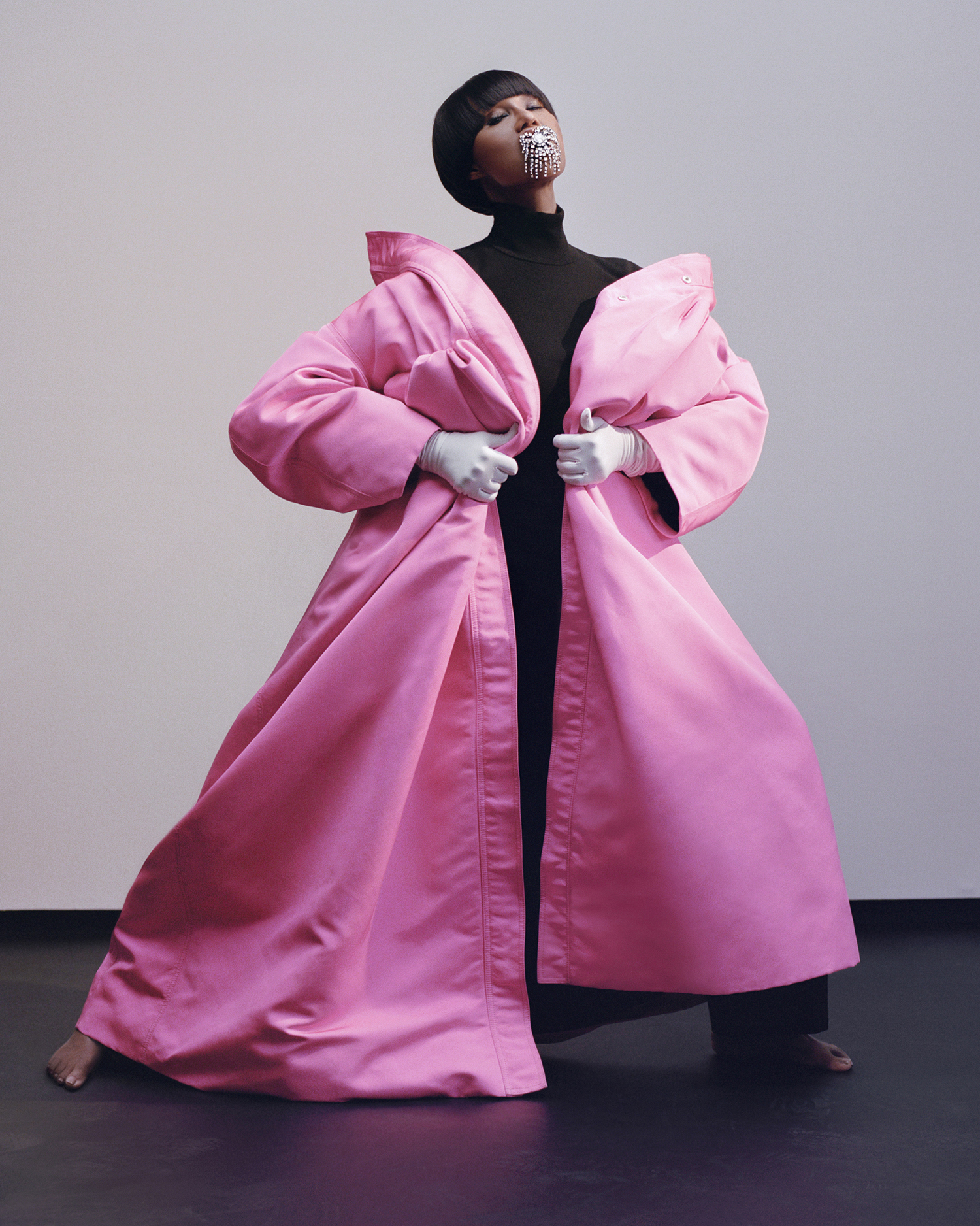
Iman Wears: All Clothing and Accessories (worn throughout) by Balenciaga Couture.
GVASALIA: Oh wow, I love that. Cristóbal Balenciaga was about comfort a lot, and when I saw this image, I was like, “It’s so couture, but I bet it’s super cozy.”
LEON TALLEY: It’s like a bathrobe for the street. But back to you, Demna. You went to school to study economics, wasn’t it?
GVASALIA: I have a B.A. in international economic trade because my father wanted me to be a businessman.
LEON TALLEY: How does your father feel now that you’re at Balenciaga?
GVASALIA: Ten years in he finally accepts that fashion designer is a job, and not just a job for rich girls, but a job where you can pay your bills and make other people happy. I always wanted to do fashion. I grew up in the Soviet Union; I’d never seen a fashion magazine in my life. In 1991, after the fall of the Soviet Union, we got copies of Vogue and the Western fashion magazines. That’s how I started to discover fashion, this dreamland I didn’t know existed. That’s why you are such an icon for me.
LEON TALLEY: It was meant to be. I looked at the collection and it was building up, it kept going higher and higher until it got to that long pink dress on this fabulous Black model. This evening gown was so seriously cut, so Balenciaga, and then made so modern by her hairdo.
GVASALIA: That’s how she came. We put her in this dress and everybody went silent. Nobody could say a word because it was so strong. This was a Balenciaga moment.
LEON TALLEY: And you know what else I loved? The boy in a gold sweater with jeans.
GVASALIA: The sweater is made with a tiny silver chain hand-knitted into it, and the jeans are hand-woven by the elderly ladies in Osaka. They’re using the old cowboy jeans machinery from the United States that the Japanese bought. There’s a story in the couture collection, which is why I really wanted to do it, because we can’t do it in ready-to-wear anymore.
LEON TALLEY: You picked the right moment. I loved the whole history of it. You go backwards to come to today. I think Mr. Balenciaga would be proud of you. You have a special point of view. Everything is so perfectly pitched to be unique, beautiful, and luxurious.
GVASALIA: Balenciaga is one of these houses where you have big shoes to fill in terms of couture. I was very scared at the beginning. That’s why I didn’t touch it for five years. But two years ago, I felt like I was getting too comfortable in my ready-to-wear journey and needed to get out of my comfort zone. I wanted to be creative. The moment I’m in my comfort zone I panic. I need to move on, to do other things. So I was like, “What do I do next?” Couture was the answer. And it made me fall in love with fashion again. Now I enjoy doing ready-to-wear again, like when I first started.
LEON TALLEY: It was a feast of beauty, exactly what people dream of couture being. And then there’s the whole idea of fluid gender and uniqueness.
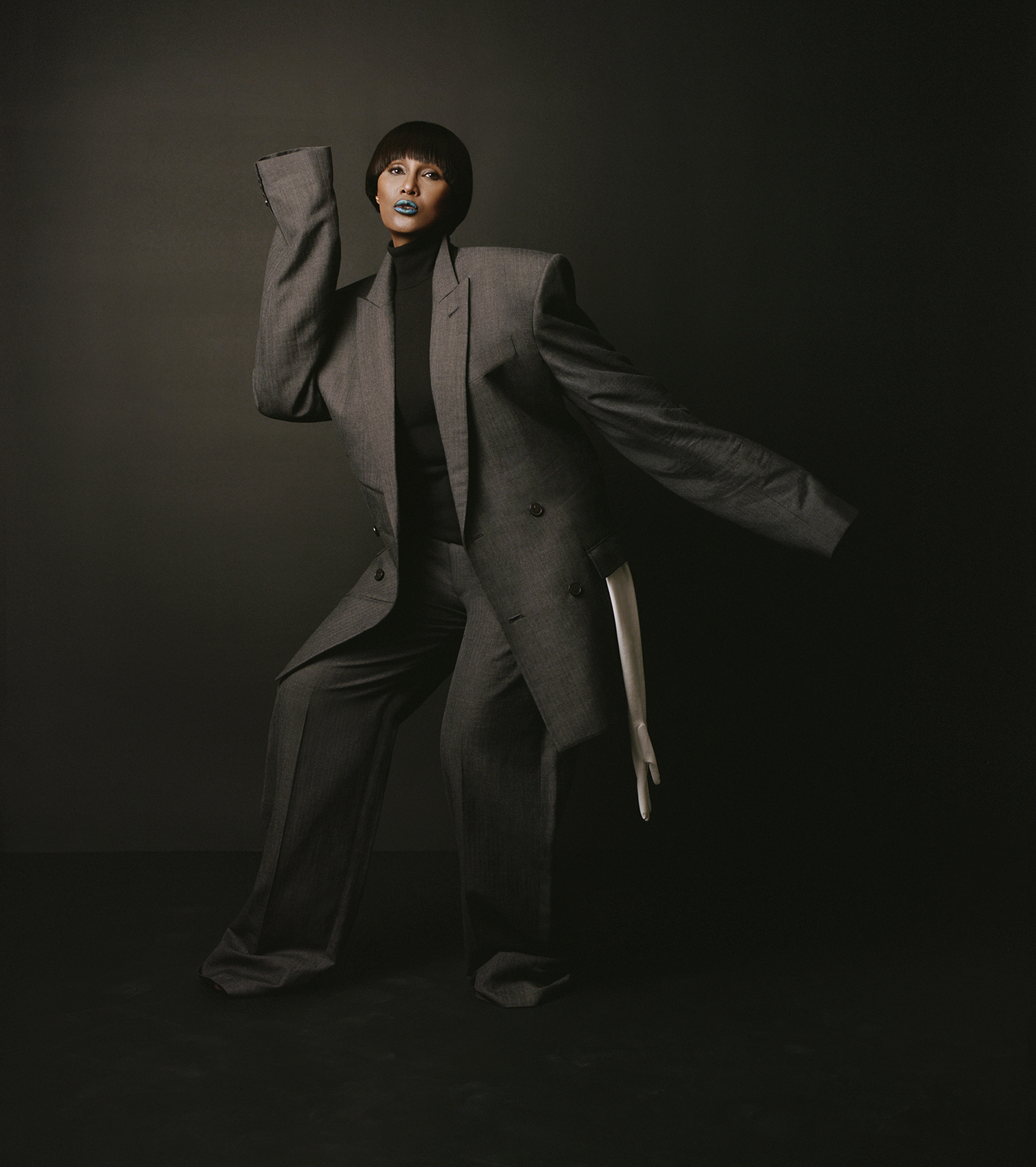
GVASALIA: I feel like my challenge and responsibility as a designer today is to question what beauty is. Why do we follow the rules from 50 years ago? I didn’t grow up in Versailles. I am a refugee. I needed to look for beauty in everything. Cristóbal did that when everybody was doing fitted silhouettes and he did what they called a “potato bag.” The most minimal thing. He was the father of minimalism in some ways. I read an article in an issue of French Vogue from the 1960s, and they ridiculed it and said it was ugly, and I suddenly felt so good, because I realized that when you want to do something like this, you always have to suffer not being understood right away. I went through that, too, and it gave me hope.
LEON TALLEY: He was very much a man who lived by his own rules. People responded to his clothes because they were quiet and perfectly pitched. That’s why it was so quiet when he used to have models walking with no music. There’s footage of Balenciaga shows where it’s two hours and no music.
GVASALIA: My couture show was in full silence, and I’m known for my shows having really loud music. But when I was working on this, I thought, “I want a minute of silence,” to honor the heritage of Cristóbal Balenciaga, but also to give the whole fashion world a moment of silence. Just shut up for a second and look at yourself in the mirror and know what fashion is becoming.
LEON TALLEY: Yes, absolutely.
GVASALIA: We had some male customers who came to the salon after the couture show to try things on and they ordered some women’s pieces as well. Who am I to decide what men or women wear? I’m just offering these clothes and people choose what they want.
LEON TALLEY: Well, you’re way ahead of the curve. Are you going to do a second collection?
GVASALIA: Absolutely. Just once a year in quarter two, because I don’t want to stress. So it’s going to be in July, in Paris, at the same historical address where Cristóbal would make it to create this heritage. I really hope you can see it in real life, because it’s a very different emotion.
LEON TALLEY: I will see it one day. Do you ever go to the archives of Cristóbal?
GVASALIA: I spend a lot of time there. I try to understand his mindset as a tailor, as a couturier. How he thought about the space between body and fabric. He was such a genius at that. It’s hard to do something smarter than what he did. When I go to his archives it’s like I’m going to school. I look at patterns and prototypes, and I try to understand how he was as a couturier. Then I go back and try to forget everything I learned because I don’t want it to be a tribute. I absorb it like a sponge and it becomes part of me, and then I try to spread my own vision, having that filter. I have his portrait in my office, so sometimes I look at it.
LEON TALLEY: He never smiles.
GVASALIA: But it’s good because it makes me think twice. Like, is that something he would approve of?
LEON TALLEY: I love the shoe boot for both the girl and the boy. Where did they come from?
GVASALIA: I took a typical man’s evening shoe that you would wear with a tuxedo and then added an 11-centimeter heel. I made the heel quite thick because I didn’t want the guys to complain that it’s not stable enough. The first week of lockdown I bought some heels online because I wanted to understand why women always complain about high heels, and I understood it. I almost broke my ankle twice. But you get such an attitude. I felt so amazing. Like, okay, I’m a gay guy who loves wearing heels. But then I wanted to see what happens when I put it on these other guys. All the gay guys, they loved it. They walked better than girls in them.
LEON TALLEY: Of course they loved it.
GVASALIA: But then the heterosexual guys were like, “I’m going to try,” but they walked even more macho.
LEON TALLEY: More macho, more straight, more butch.
GVASALIA: Yeah, more butch, because they needed to compensate for this 11-centimeter heel with butchness. And I realized the psychological effect that 11 centimeters can have on a guy. This is the power of clothes, of shoes.
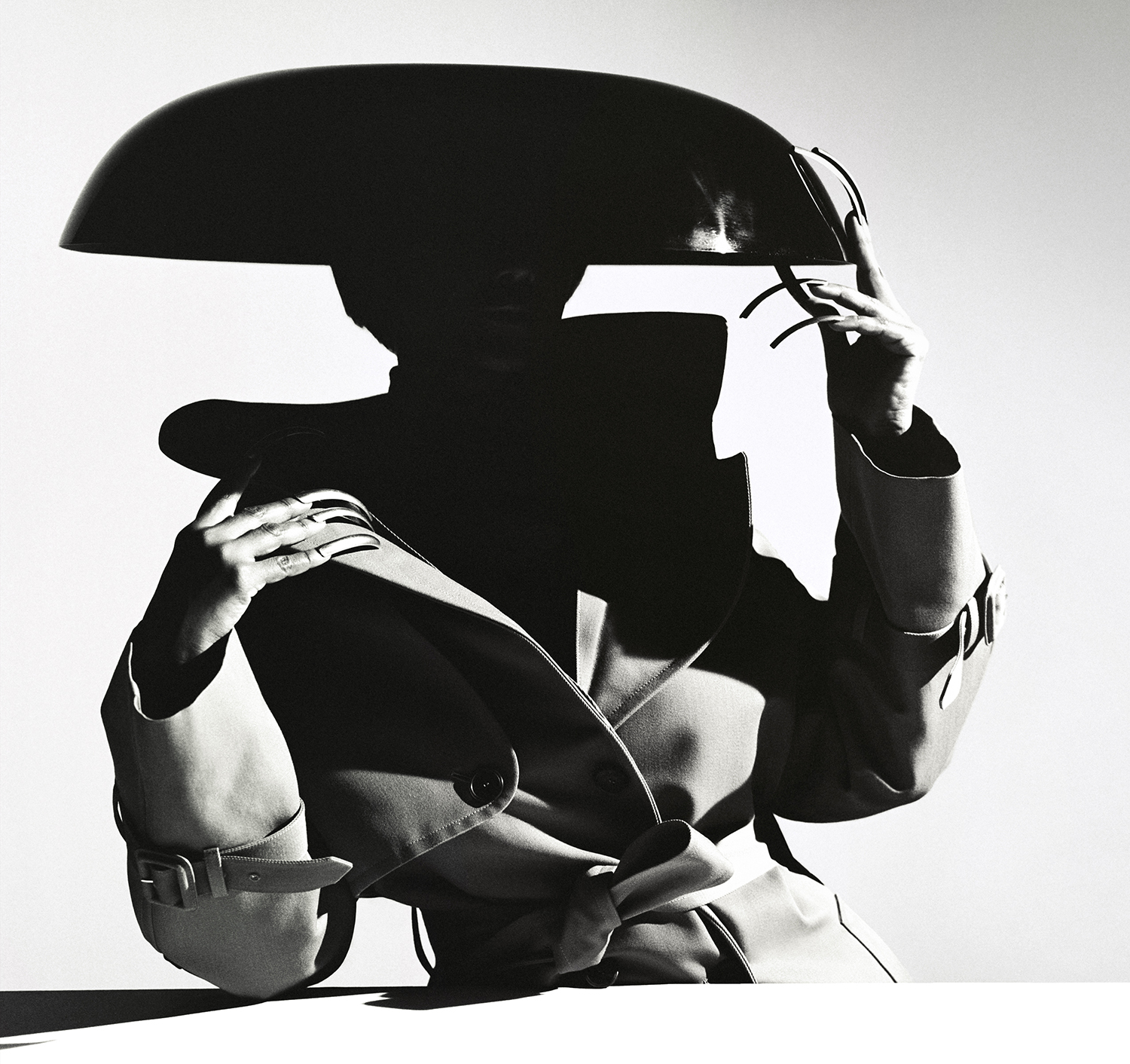
LEON TALLEY: It’s the power of fashion.
GVASALIA: It’s the power of fashion. I wanted to press those buttons. It was also symbolic. Like, why do boys have to wear blue and girls pink? Even if we don’t change it overnight, we need to talk about it, and I wanted to do it through couture.
LEON TALLEY: When you were young, what was your favorite item of clothing?
GVASALIA: This little red coat that I had my parents buy for me, which was actually for a girl. They didn’t want to buy it for me, so I made a big scene in the store and finally, they bought it. I wanted it not to wear, but to look at, because I found it so beautiful that I just needed to have it. It was like a piece of art to me. That was my first memory of being attached to clothing. Then my parents made it disappear because they were afraid I would wear it and it would make me gay, which happened anyway. But the little red coat that looked like a baby-doll coat, very Balenciaga in some ways.
LEON TALLEY: Do you ever come to New York at all?
GVASALIA: I came often before COVID, but now it’s so complicated. I actually have to go next week for the Met Gala.
LEON TALLEY: What are you wearing? You have to wear something brilliant.
GVASALIA: I’m going in sweatpants. The theme is Americana and what is more American than sweats? I’m not sure they will let me in, but I’m going to try.
———
Casting: Calvin Wilson at Establishment
Nails: Eri Ishizu
Set Design: Eric Mestman at Bryant Artists
Set Design Assistants: Abe Santana and Miles Chick
Set Design Intern: Caroline Cramer
Hair: Hos Hounkpatin using K18 Haircare at The Wall Group
Makeup: Keita Moore (kilprity) using Iman Cosmetics, Armani Beauty, Coloured Raine Cosmetics
Lighting Technician: Siggy Bodolai
Executive Producer: Mai Fujiwara at Wildcat
Production: Eliza Hoyland and Chelsea Williams at Wildcat
Photography Assistant: Grayson Vaughn
Fashion Assistants: Nia Shambourger
Tailor: Maria Del Greco at Lars Nord Studio
Production Assistant: Marcus Macdonald

